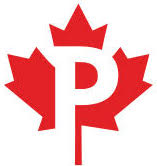
| Name | Value |
|---|---|
| Date of Issue | September 29, 2022 |
| Year | 2022 |
| Quantity | 400,000 |
| Denomination |
 PERMANENT™ (P). PERMANENT™ (P).Current monetary value: $0.92. |
| Series | Truth and Reconciliation |
| Series Time Span | 2022 - 2024 |
| Postal Administration | Canada |
| Condition | Name | Avg Value |
|---|---|---|
| No Prices for stamp | ||







Released on the day prior to September 30, the National Day for Truth and Reconciliation, this stamp issue is the first in a series showcasing the visions of Inuit, Métis and First Nations artists for the future of truth and reconciliation, with the hope of encouraging awareness of and reflection on the effects of colonization on Indigenous Peoples and the work of the truth and reconciliation process.
First Nations, Inuit and Métis children were forced to attend federally created Indian residential schools, which operated for nearly a century and a half. More than 150,000 children were taken from their families and communities, many never to return home.
The illustration by First Nations artist Jackie Traverse, centred on the bunchberry, a flowering plant found across Canada, represents seeds of change, reminding us that for bountiful future harvests, we must share the sun, water and land.
Inuit artist Gayle Uyagaqi Kabloona features a woman lighting a qulliq, the traditional Inuit stone lamp, to signify care and healing for all Indigenous communities.
Métis artist Kim Gullion Stewart places beaded flowers over the contour lines of a map as a reminder of the need to live symbiotically with the land, nature and each other.
Canadian designer Blair Thomson offers two perspectives – the trauma and pain endured by Indigenous Peoples and the settlers’ shame and acknowledgement of this truth. An Indigenous child looks out from behind the hands to reinforce the message that we must never look away again.
The stamps also include the words “Truth and Reconciliation” in the traditional languages and regional dialects of the three artists, respectively Anishinaabemowin, Saulteaux dialect; Inuktitut, Kivalliq dialect and Heritage Michif.
Featuring stark archival images of residential schools in different parts of Canada, the stamps serve as a reminder of the fear, loneliness, pain and shame experienced by generations of Indigenous children in these federally and church-created institutions. The stamp issue serves as a vehicle for truth about Canada’s residential school system to help support the process of reconciliation and, ultimately, healing.
In partnership with the Survivors Circle of the National Centre for Truth and Reconciliation, this series of stamps seeks to raise awareness about residential schools and the legacy of trauma and abuse that continues to have an impact on Indigenous Peoples today.
For this third year of the series, the Survivors Circle selected artists Adrian Stimson, Robert Burke and Helen Iguptak to provide work for the stamp issue.
These works reflect the artists’ experiences at residential schools and express resilience, cultural resurgence and the hope for a better future for all children.
The stamp issue is produced in partnership with the Survivors Circle of the National Centre for Truth and Reconciliation.
Canada Post is committed to listening to Indigenous voices and to using these stamps as a vehicle for Survivors to share the truth of their experiences so that we can support the process of reconciliation and, ultimately, healing, as we move forward. Canada Post thanks the Survivors Circle of the National Centre for Truth and Reconciliation for their guidance throughout this process.
The booklet cover features the Survivors’ Flag of the National Centre for Truth and Reconciliation (NCTR), reproduced with permission. According to the NCTR: “The Survivors’ Flag is an expression of remembrance, meant to honour residential school Survivors and all the lives and communities impacted by the residential school system in Canada.”